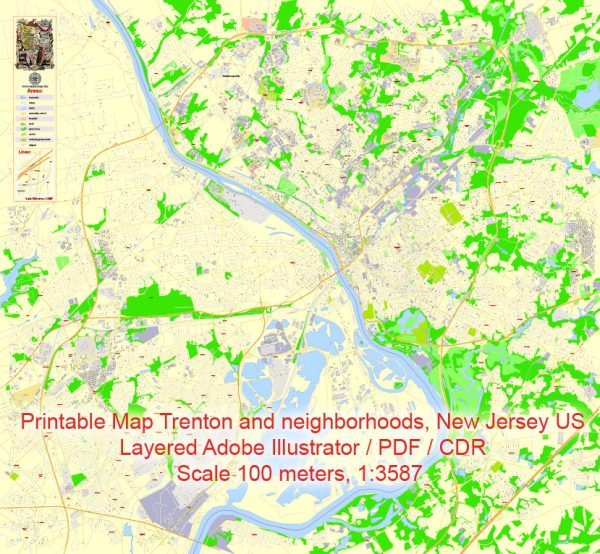Trenton, the capital of New Jersey, has a history of urban development that reflects its strategic location along the Delaware River and its role in various historical events. Here’s an overview of the key phases in Trenton’s urban development:
Colonial and Revolutionary Era:
Trenton was settled by Europeans in the early 18th century and was named after William Trent, one of its early landowners. Its proximity to the Delaware River made it a vital transportation and trading hub. During the American Revolution, Trenton gained significant historical importance with the pivotal Battle of Trenton in 1776. George Washington’s successful surprise attack on the Hessian forces marked a turning point in the war and boosted Trenton’s significance.
19th Century Industrialization:
In the 19th century, Trenton experienced industrial growth, particularly in manufacturing and transportation. The construction of the Delaware and Raritan Canal and the extension of the railroad contributed to the city’s economic development. Trenton became known for its pottery and ceramics industry, earning the nickname “The Staffordshire of America.”
State Capital and Infrastructure Development:
Trenton was established as the capital of New Jersey in 1790, further solidifying its role in state governance. Throughout the 19th century, the city saw the construction of important public buildings, including the New Jersey State House. The Assunpink Creek, which flows through Trenton, played a role in the development of water-powered industries.
Post-World War II Era:
Like many American cities, Trenton faced challenges in the mid-20th century as industrialization declined. The city experienced economic shifts, population changes, and issues related to urban decay. Redevelopment efforts aimed to revitalize downtown areas, and the construction of highways, such as Route 29 along the Delaware River, influenced transportation and urban planning.
Economic Challenges and Redevelopment:
In the latter half of the 20th century, Trenton faced economic challenges, including deindustrialization and job losses. Efforts were made to revitalize the city through urban redevelopment projects. The construction of the Trenton-Mercer Airport in the 1970s aimed to improve transportation infrastructure.
Contemporary Period:
Trenton continues to grapple with urban challenges, including issues related to economic inequality, crime, and vacant properties. However, there have been ongoing efforts to promote revitalization and community development. The city has invested in cultural institutions, historic preservation, and events to attract residents and visitors.
Cultural and Historical Preservation:
Trenton has preserved and celebrated its historical and cultural heritage. The Old Barracks Museum, for example, showcases Trenton’s role in the American Revolution. The city’s historic districts, such as Mill Hill, feature well-preserved architecture.
State Government and Education:
The presence of state government institutions, including the New Jersey State House and state offices, remains a significant aspect of Trenton’s identity. Additionally, institutions like Thomas Edison State University contribute to the city’s educational landscape.
Trenton’s history of urban development is closely tied to its role in American history, industrialization, and state governance. While facing challenges common to many older industrial cities, Trenton continues to evolve, with ongoing efforts to balance preservation with revitalization.


 Author: Kirill Shrayber, Ph.D.
Author: Kirill Shrayber, Ph.D.